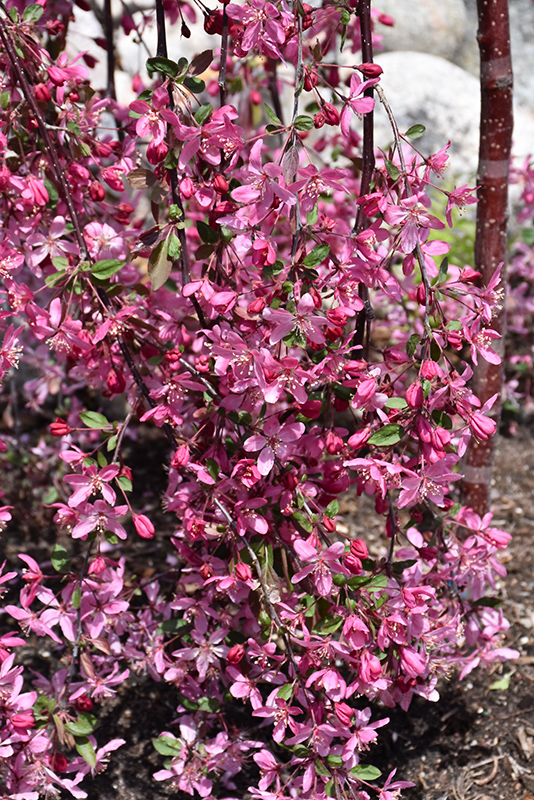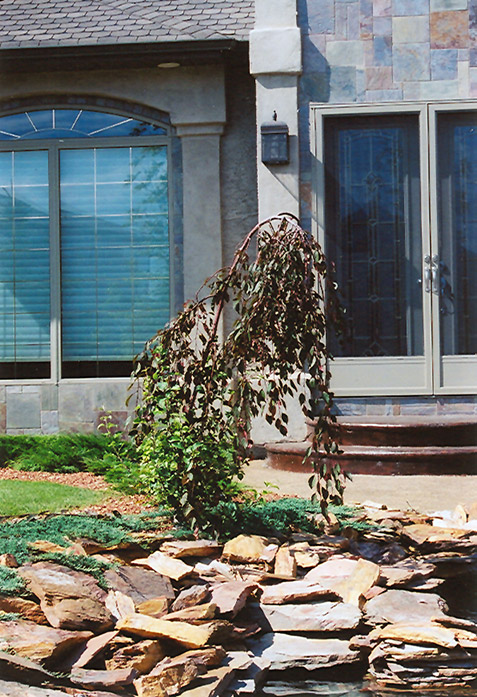Royal Beauty Flowering Crab
Malus 'Royal Beauty'
Height: 10 feet
Spread: 15 feet
Sunlight:
![]()
Hardiness Zone: 3a
Other Names: Roseybloom, Crabapple
Description:
A hardy weeping flowering crab with cascading purple foliage and showy pink flowers in spring followed by small dark red fruit; exceptionally effective as a feature ornamental in a mixed garden composition, needs well-drained soil and full sun
Ornamental Features
Royal Beauty Flowering Crab is clothed in stunning clusters of fragrant pink flowers along the branches in mid spring, which emerge from distinctive purple flower buds before the leaves. It has attractive purple deciduous foliage which emerges brick red in spring. The pointy leaves are highly ornamental and turn an outstanding burgundy in the fall. The fruits are showy red pomes carried in abundance from early to late fall.
Landscape Attributes
Royal Beauty Flowering Crab is a spreading deciduous shrub with a rounded form and gracefully weeping branches. Its average texture blends into the landscape, but can be balanced by one or two finer or coarser trees or shrubs for an effective composition.
This is a high maintenance shrub that will require regular care and upkeep, and is best pruned in late winter once the threat of extreme cold has passed. It is a good choice for attracting birds to your yard. It has no significant negative characteristics.
Royal Beauty Flowering Crab is recommended for the following landscape applications;
- Accent
- General Garden Use
Planting & Growing
Royal Beauty Flowering Crab will grow to be about 10 feet tall at maturity, with a spread of 15 feet. It tends to be a little leggy, with a typical clearance of 2 feet from the ground, and is suitable for planting under power lines. It grows at a medium rate, and under ideal conditions can be expected to live for 50 years or more.
This shrub should only be grown in full sunlight. It prefers to grow in average to moist conditions, and shouldn't be allowed to dry out. It is not particular as to soil type or pH. It is highly tolerant of urban pollution and will even thrive in inner city environments. This particular variety is an interspecific hybrid.



